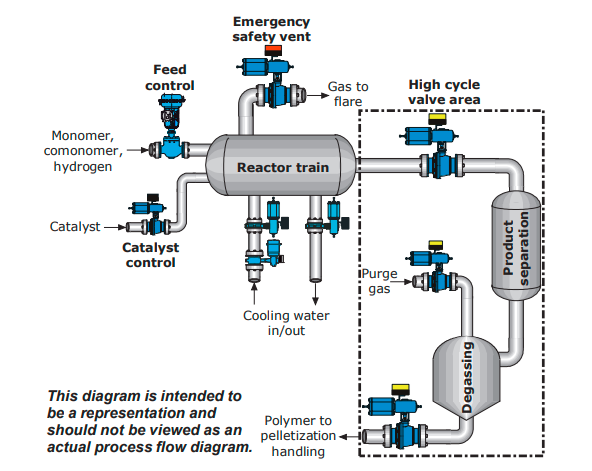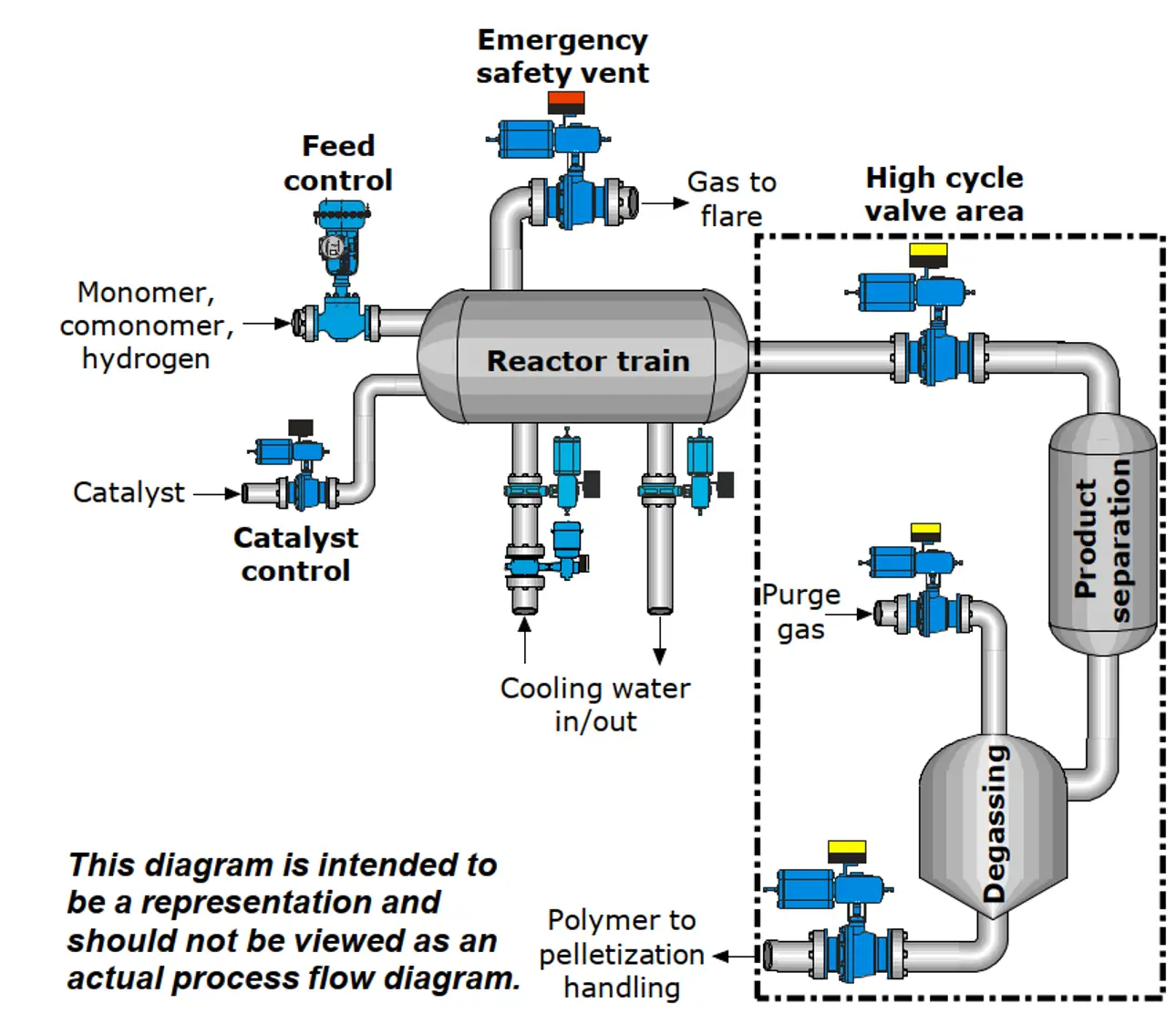Chemically a simple one, the polymerization process can sometimes get tricky with inappropriate valves. If you’re looking for tips on choosing the right valves for efficient plastic production, this blog is for you.

The versatility of plastics, with their low cost and simple manufacturing process, makes plastic one of the world’s most commonly used materials, with an almost infinite range of applications. Since it’s a polymer, one of the most often used processes for plastic production is called polymerization.
The polymerization reaction starts with a primary product, a monomer. When triggered by appropriate catalysts, it joins with another monomer, producing a polymer. The nature of the process is simple, though for many plastics manufacturers, the challenge of reaching high efficiency still exists.
Sometimes, it only takes more reliable valves to overcome these challenges, allowing the plant to starting producing at its full potential.
High-cycle valves for polymerization
Typical polymerization reactors use dozens of valves, most of which are called into action very infrequently. The function of the valves in polymerization reactors varies, depending on the process stage. They can be used for product conveyance, isolation, gas venting or pressure balancing. But all these applications call for reliable, high-cycle valve operation.
Some examples of high-cycle valves used around the reactor include flow control devices, such as product separation block valves, main separation line valves, pressure equalization valves and purge gas valves.
Process challenges
Several characteristics of the polymerization process, however, negatively impact valve efficiency and long-term reliable operation.
Polymerization calls for extremely demanding and robust valve performance − from about 100,000 up to 1,500,000 cycles per year, with a stroke time of less than three seconds. And the process is associated with high pressure differences and vibration-affecting devices. Also, the mediums used often contain abrasive elements, while continuous polymerization can lead to polymer growth in some valve parts.
The polymer industry employs many different catalysts, and to produce plastics with innovative properties, new catalysts are developed every year. Unfortunately, these newer catalysts often produce more abrasive polymers, lengthening the list of challenges for valves.


